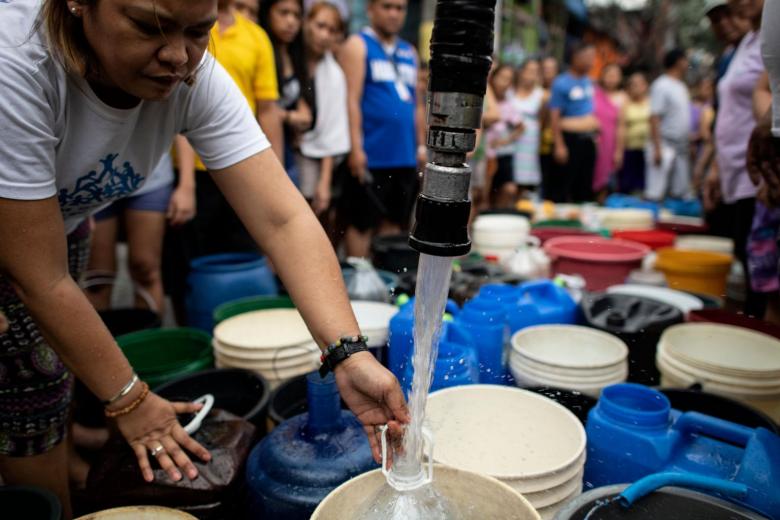MANILA - President Rodrigo Duterte is turning to Singapore for help to ease metropolitan Manila's worsening water crisis.
"We need a lot of advice from Singapore, and I'm sure the advice will go a long way to help us solve our problem, especially water," Mr Duterte told Singapore's new Ambassador to Manila, Mr Gerard Ho, on Tuesday (March 19).
Mr Ho was presenting his credentials to the Philippine president.
Mr Duterte was especially interested in Singapore's experience with desalination.
"I know Israel and Singapore (have) the best operating (desalination) machines," he told Mr Ho.
Singapore has three desalination plants that produce up to 490 million litres per day, enough to cover up to 30 per cent of its water needs.
Desalination, though, is too expensive to be viable for the Philippines. Experts estimate that it would cost more than US$2 (S$2.70) per cubic metre of water.
Large parts of the Philippine capital are in the grip of a water crisis. More than 13 million people live in Metro Manila, which spans 16 cities and one town.
Taps have run dry for over two weeks for some six million customers of privately held concessionaire Manila Water.
Long queues have waited for hours in front of water trucks, deep wells and stores selling distilled water across metropolitan Manila.
Hospitals have had to cut water supply to its rooms and scale back on operations. Malls have had to close toilets, and police stations and jails have had to purchase extra pails for inmates in their cells.
In hearings in Congress on Monday and Tuesday, executives of Manila Water owned up to the "supply deficit situation".
Taps are running dry because Manila Water, which supplies half of Metro Manila, does not have access to enough water sources to cover growing demand.
Manila Water draws 1.6 billion litres a day from Angat dam, in Bulacan province, north of Manila. In recent years, though, it has had to supply 1.75 billion litres a day, as the population in its concession area grows.
To cover for the shortfall, Manila Water has also been drawing water from the much smaller La Mesa dam.
But, following the recent long dry spell, the water level at La Mesa plunged to its lowest level in 21 years, and Manila Water could no longer draw sufficient volume from it.
Government regulators are blaming Manila Water for failing to augment its capacity and tap new sources and relying instead solely on La Mesa and on water rationing.
Company officials however have responded by claiming that the government had yet to approve its requests to build more reservoirs and water treatment plants, as well as proposals to build new dams.
On Wednesday, Manila Water chief executive Ferdinand dela Cruz again offered to step down.
This came hours after Mr Duterte threatened to scrap Manila Water's contract with the government and berated officials of the Metropolitan Waterworks and Sewerage System (MWSS), the agency that oversees Metro Manila's two water concessionaires.
Mr Duterte summoned officials of the MWSS, Manila Water and the other concessionaire, Maynilad Water Services, for a dressing down on Tuesday.
"In a stern message delivered without even once looking at the officials, the obviously outraged President threatened to fire the MWSS officials and terminate the concessionaires' contracts," said Mr Duterte's spokesman Salvador Panelo.
Mr Panelo described the meeting as a "presidential monologue".
"(Mr Duterte) told them he was not going to listen to their explanation… as such would be just plain excuses. They simply did not do their job. All they care about is get profit," he said.


